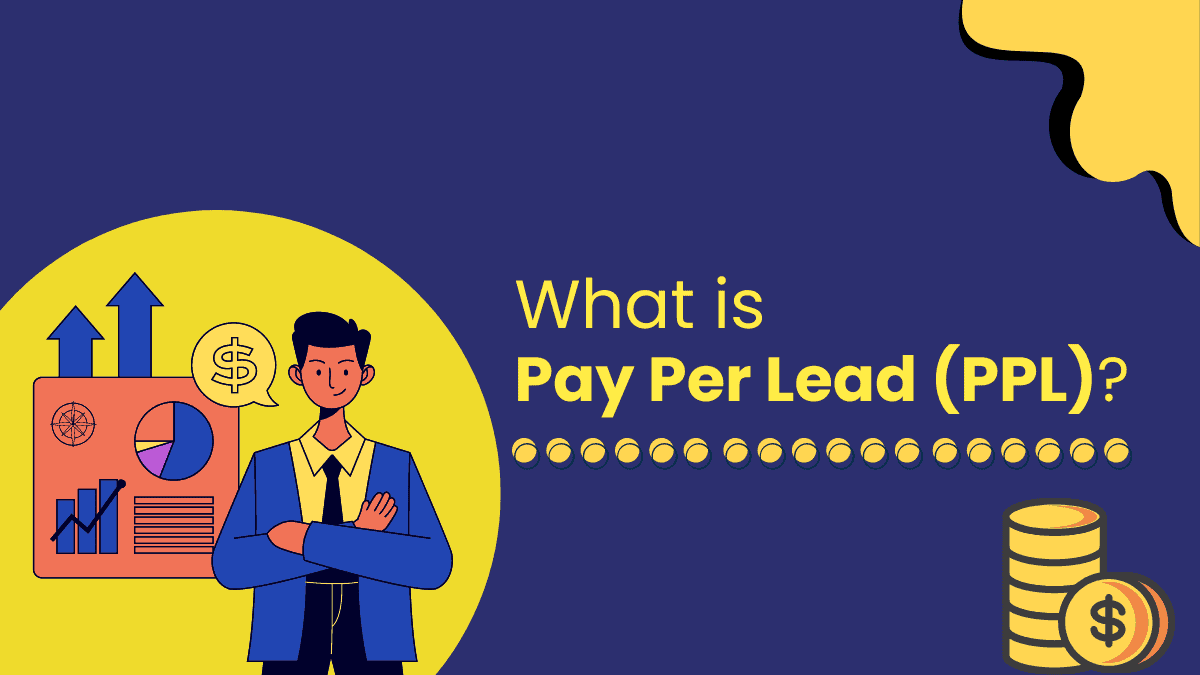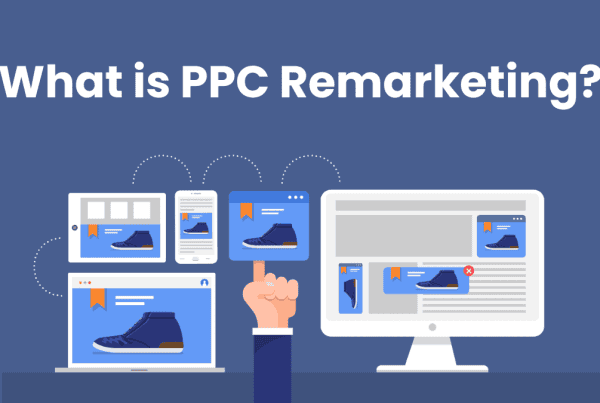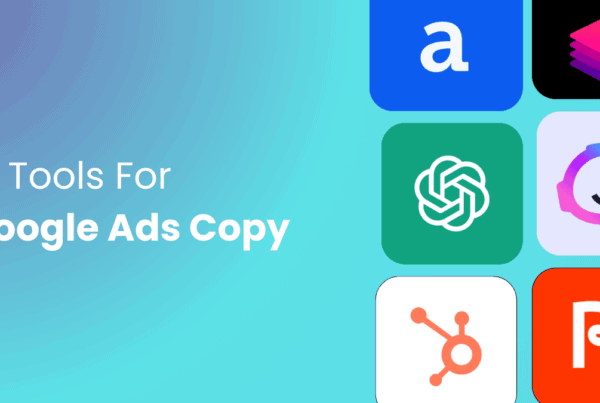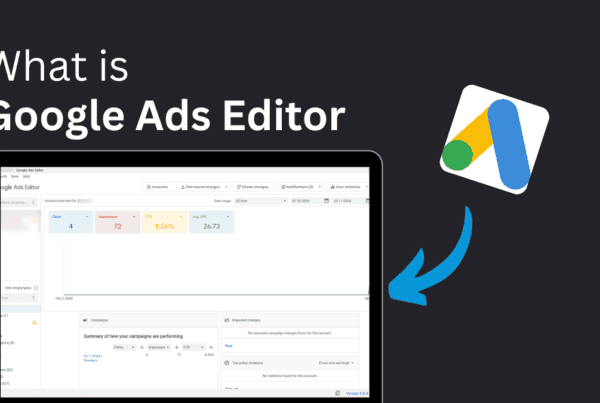
Imagine if marketers could pay for genuine customer interest instead of mere clicks or views. With pay per lead (PPL) marketing, this becomes a reality. Unlike pay-per-click advertising, PPL tactics enable you to target potential clients who are more likely to be genuinely interested in your offer. By prioritizing lead generation, PPL campaigns have the potential to uncover untapped opportunities and optimize marketing expenditure for maximum ROI.
In this post, we’ll delve into the world of pay per lead services, offering comprehensive insights into how they function, the associated costs per lead, and their effectiveness in acquiring new customers.
Furthermore, we’ll explain how pay per lead strategies operate and demonstrate how our team can seamlessly integrate them into your marketing efforts, filling your sales pipeline with high-quality leads to foster business growth.
What is Pay Per Lead?
We all think most of you know what the pay per lead plan is, but to get things started, let me quickly explain it:
Pay per lead is a performance-based online marketing model where marketers pay service providers based on the number of qualified leads, they bring in instead of the more common measures of:
- Ad position
- Clicks
- Cost Per Acquisition (CPA)
- Engagement rate
- Impressions, etc.
Even though it sounds complicated, it’s quite simple.
Focusing on getting leads that meet certain criteria ensures a more direct and cost-effective way to generate leads. Pay Per Lead eliminates the need to shoot wide. Choose bait that attracts the fish you want. The fact is “about being precise and efficient so that every lead you get brings you closer to the big catch, your perfect prospects”.
How Exactly Does Pay Per Lead Marketing Work?
Pay per lead marketing functions as a performance-based program, where a company charges for qualified leads generated for a brand. In this arrangement, the lead generation business collaborates with the brand to define specific actions that qualify as leads, such as form submissions, sales, or subscriptions. The brand only pays the lead generation company upon successfully delivering these agreed-upon leads.
The primary responsibility of the advertiser or lead creation company is to attract and deliver these leads to the brand. These leads generate revenue for the advertiser when they meet the agreed-upon criteria, such as demonstrating genuine interest in the product or service.
Unlike pay per click or impression-based marketing, where engagement does not guarantee genuine interest, leads generated through PPL marketing are typically more interested in the product or service being offered and thus more likely to convert.
One significant advantage of PPL marketing is its cost structure. Unlike pay per click advertising, there are no additional charges for impressions or clicks. Instead, brands pay only for the leads they receive, making it a potentially more cost-effective option for acquiring high-quality leads.
Pros and Cons of Pay Per Lead Marketing
Here are the advantages and disadvantages of Pay Per Lead Marketing:
Pros:
Fixed Cost
Paying per lead means you only spend money when you get results. No upfront costs give you better predictability of Return on Investment (ROI), making clients more willing to invest further in lead generation.
Targeting specific groups becomes easier
Targeting specific groups with marketing is made easier with pay per lead services. These services help businesses connect with the right people, increasing the chances of turning leads into sales. By focusing on the right audience, companies can maximize their marketing efforts and work more efficiently. Furthermore, this approach improves lead quality and conversion rates, leading to more successful sales outcomes.
No Ceiling
With pay per lead, your earning potential is limitless. The more leads you generate, the more money you make. As long as you target the right audience, there’s no cap on your earnings.
Transparency in ROI measurement
Using a pay per lead model allows businesses to measure their return on investment (ROI) accurately. Since payment is based on the number of leads received, it’s easy to calculate the cost per lead and adjust marketing strategies accordingly. This transparency in ROI measurement enables informed decision-making and allows for data-driven adjustments to marketing plans.
Cost-Effectiveness
Pay per lead is a cost-effective model. You don’t need to spend on marketing strategies or ad campaigns; you simply pay for the leads generated. As long as the leads are of decent quality, and you’re making more than you’re paying, it’s profitable.
Reduced Risks
Pay per lead ads offer reduced risk for businesses. Companies only pay for leads that meet specific criteria, ensuring that their investment goes towards prospects more likely to make a purchase. This risk reduction is especially beneficial for businesses with limited budgets, as they can allocate resources confidently, knowing they’ll only pay for quality leads.
Some pay per lead models, such as pay-per-appointment, further minimize risk by focusing on leads closer to the bottom of the sales funnel. These leads are typically more qualified and have a higher likelihood of converting, providing businesses with even greater assurance of a return on their investment.
Cons:
Quality of Leads
The quality of leads matters for conversions. Some pay per lead companies may use unethical methods to obtain leads, such as bots or recycled information. This can harm your conversion rates, and you have no visibility into how leads are generated.
According to Techopedia, many people don’t like pay per lead (PPL) because it encourages affiliates to use sneaky methods to find and report leads. This can lead to fake or weak leads. Unlike other affiliate strategies that pay for lots of website visitors, PPL can be easily misused. This isn’t good for the advertiser or the affiliate.
Cost Scales with Leads
While the model ensures a fixed cost per lead, it also means the cost is directly proportional to the number of leads you purchase. This limits your ability to scale without increasing spending. It might be more cost-effective to generate leads in-house through methods like quizzes in your marketing funnel.
Not Suitable for Every Niche
Pay per lead is best suited for profitable, large niches. Small markets may struggle to afford the per-lead costs or handle the volume of leads generated. If you operate in a smaller niche, this model may not be feasible for your business.
Pay Per Lead vs Pay-Per-Click and Pay-Per-Conversion
Imagine you’re running a small business and want to reach more customers. There are different ways to advertise, like pay-per-click (PPC) and pay-per-conversion (PPA).
With PPC, you pay whenever someone clicks on your ad, but you still need to turn those clicks into actual sales. The problem is, that not all clicks lead to purchases, so you might end up paying for lots of visits that don’t help your business.

On the other hand, with PPA, you only pay when someone buys something after clicking on your ad. This sounds great, but it can be hard for your advertising partners to make sales, so they might ask for more money per sale.
That’s where pay per lead comes in – it’s like a middle ground. You pay for qualified leads, which are people who are genuinely interested in your products. This way, you’re not wasting money on clicks that don’t go anywhere, and you’re not paying a fortune for every sale. You still need to work on turning those leads into customers, but at least you’re starting with a group of people who are already interested in what you have to offer.
Choosing the Right Pay Per Lead Program
Let’s talk about finding the perfect pay per lead program for your business. Remember, there’s no one-size-fits-all solution. Some programs might suit you better than others.
Understanding Different Lead Types
First, let’s figure out what type of leads you need.
- Contact Leads: These are basic, just containing contact info like name and email. They’re often gathered through things like free e-books or cheat sheets.
- MQL (Marketing Qualified Leads): These are a step up, providing more info like gender, age, and interests. They’re reviewed by the marketing team before being passed to sales.
- SQL (Sales Qualified Leads): These are the cream of the crop. They’ve been thoroughly vetted by both marketing and sales teams and are ready to be sold to. They contain detailed info like specific product interests and budgets.
Best Niches for Pay Per Lead
Big, profitable markets are where it’s at for pay per lead. Look for businesses selling higher-priced products, like:
- Insurance
- Mortgage services
- Debt relief
- Online Education
- Real estate
These industries can handle a high volume of leads and are willing to pay well for them.
How Much Can You Earn per Lead?
According to LeadShook, the price per lead varies widely, from $30 to $1000 or more. It depends on factors like lead quality, niche profitability, and how difficult it is to get the lead. Keep in mind, that leads in competitive places like New York City will be pricier than in less crowded areas like Nebraska. Also, generating your leads tends to be more profitable than buying them from others.
Is Pay Per Lead Marketing Right for Your Business?
Wondering if a pay per lead marketing campaign suits your business? Let’s break it down.
You Sell High-ticket Products
If your products come with a hefty price tag, selling them can be tough. Customers take their time deciding on big purchases, so your sales process is more complex.
Pay per lead lets you focus on selling while experts handle lead generation. Pay per-lead strategy can be also blended with the following dedicated marketing strategies to sell high-ticket items:
You Offer Technical Products
Selling super technical stuff? Or maybe your services have a big impact on people’s lives, like medical equipment or legal aid. In these cases, you want full control over the sales process. While affiliates can help attract leads, your sales team handles the rest.
You Have an Amazing Sales Team
Got a top-notch sales crew? Pay per lead is a smart move. It’s cheaper than paying for conversions, so you can keep your sales pipeline full without breaking the bank. Let your sales pros do what they do best while others handle lead generation.
Overall Process of Pay Per Lead
Now, let me break down the Pay Per Lead (PPL) process for you:
Setting Standards for Leads
Before anything else, you need to decide what makes a good lead for your business. This means figuring out who your ideal customers are and what actions they need to take for you to consider them a lead. These actions could include things like filling out a form, signing up for a newsletter, or requesting more information.
Creating the Perfect Customer Picture
Once you know what a good lead looks like, you create what’s called an Ideal Customer Profile (ICP). This is like making a detailed plan for your ideal customer. You think about everything from their interests and needs to their favorite things. Having a clear picture of your ideal customer helps you focus your efforts and find the right leads.
Target Audience Identification
After defining your ideal customer, you need to figure out how to reach them. Your advertising partners will do a lot of research to understand where your target audience spends their time online and what they’re interested in. This way, they can create campaigns that connect with the people most likely to be interested in your products or services.
Developing Lead Magnets
Once you know who you’re trying to reach, you need to give them a reason to become a lead. This often involves creating something valuable that you can offer them in exchange for their contact information. This could be things like ebooks, webinars, or special deals. These are called lead magnets because they attract leads to your business.
Enhancing Home Pages for Conversion
Landing pages are where your leads first land when they click on your ads. Your advertising partners will make sure these pages are optimized to encourage visitors to become leads. This might involve things like adding clear calls to action and explaining the value of the offer.
Implementing Lead Tracking and Routing Systems
As your campaigns run, you need a way to keep track of the leads you’re generating and make sure they’re getting to the right place. This involves setting up systems to collect contact information and track how leads are interacting with your website. It’s like having a map to follow to make sure everything goes smoothly.
Qualifying Leads
Not every lead is going to be a good fit for your business. Some might not be interested in buying or might not be the right fit for what you offer. That’s why it’s important to qualify your leads to make sure they meet your criteria before you spend time and effort trying to turn them into customers.
Fulfilling the Agreement
With PPL, you only pay your advertising partners for the leads they deliver. But before you start, you need to agree on how much you’re willing to pay for each lead and what constitutes a qualified lead. This way, everyone knows what to expect and there are no surprises.
Analyzing Campaign Performance and Iterating
After your campaigns have been running for a while, it’s important to take a step back and see how they’re performing. This involves looking at things like how many leads you’re generating, how qualified those leads are, and how many of them are turning into customers. Based on this information, you can make adjustments to your campaigns to improve their effectiveness and get better results.
The Real-life Example: Case Study
In this real-life example, a company called AMI Global faced common challenges:
- They needed more leads for their sales pipeline, and
- They struggled with the long sales process for their niche market of pump manufacturers and distributors.
To solve these problems, they hired a pay per lead company. Here’s what they did:
- They focused on creating compelling outreach content, using email to nurture leads and turn them into promising conversations with potential customers.
- They targeted large accounts, reaching out directly to key decision-makers in big companies with thousands of employees.
- They adjusted their strategies as needed, refining their approach with subject lines and email content to exceed their client’s expectations.
This pay per lead approach delivered impressive results, providing AMI Global with the leads they needed to engage with and ultimately convert into long-term customers.

Conclusion
This concludes that Pay Per Lead Marketing is a revolutionary way to generate leads, providing unmatched efficiency, effectiveness, and scale. Pay per lead marketing services can help you find new business possibilities, grow your business, and reach your goals, no matter how big or small your company is.



